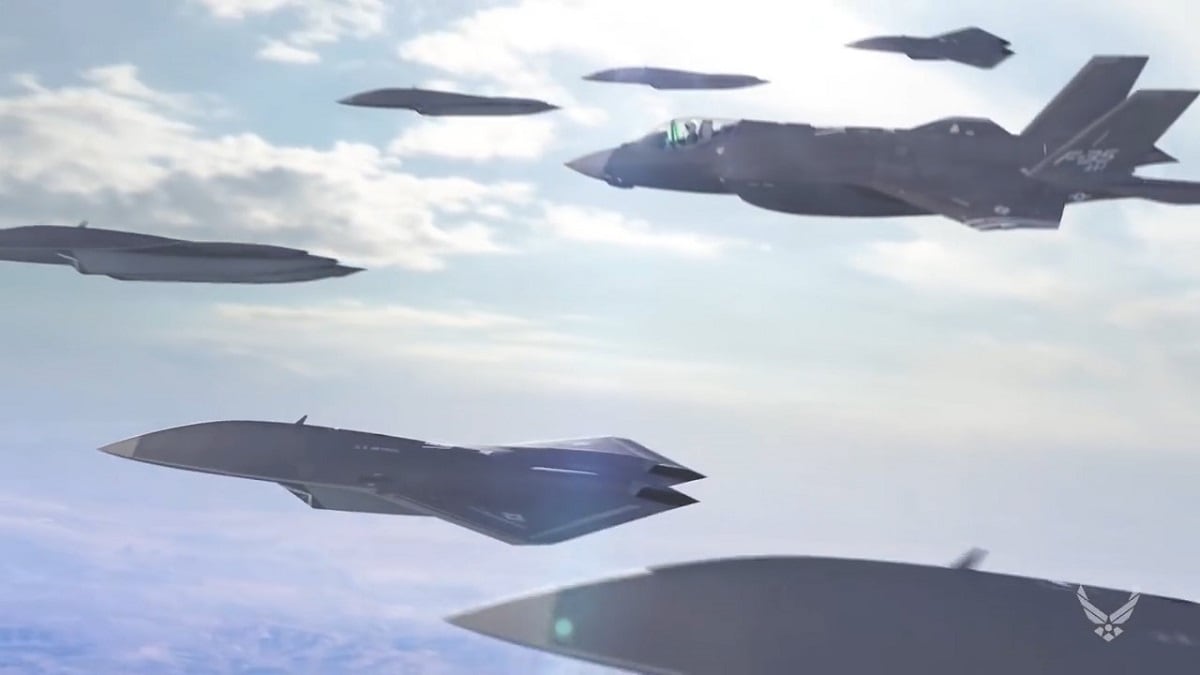WASHINGTON — It has been eight years since the U.S. Air Force canceled its effort to field a successor to the MQ-9 Reaper, but it appears the service might take another swing at developing a new combat drone.
On June 3, the Air Force issued a request for information on a next-generation unmanned aircraft with strike, intelligence, surveillance and reconnaissance capabilities, with the intent to accept delivery of the first systems in 2030 and field them in 2031.
The solicitation was first reported on by Aviation Week.
RELATED

“With the MQ-9 platform planning for end of service life, a need to identify a solution that continues to provide for this demand is imperative,” the RFI stated. “The purpose of this RFI is to research potential solutions for the Next Generation UAS ISR/Strike platform, the Next Generation Medium Altitude UAS and potential follow-on program to the MQ-9 weapon system.”
The Air Force is looking to collect market research on existing technologies as well as systems that are currently under development, with a focus on drones that incorporate advanced technologies such as autonomy, artificial intelligence, machine learning, digital engineering and open-mission systems.
In addition, the service is open to attritable technologies — meaning systems that are not cheap enough to be considered expendable, but some losses are still expected in combat.
“The Air Force is also interested in researching alternative ways to support future lower-end, lower-cost ISR missions which may include initiatives to modernize, augment, and/or replace existing systems,” the RFI stated. “This RFI inquires about unique and innovative practices that can deliver relevant capability efficiently, timely and at a reduced life-cycle cost.”
Although the Air Force has not solidified an acquisition strategy, it intends to hold multiple competitions for the air vehicle itself, as well as its ground control systems and the suite of sensors and data exploitation technology it will use to collect and dissect information. Each technology area will be built to open-architecture standards.
Responses to the RFI are due July 20.
This latest effort would mark the second time the Air Force has tried to replace the MQ-9 Reaper, currently being manufactured by General Atomics. In its first attempt, known as MQ-X, the service sought to procure a more survivable combat drone that could operate in contested spaces where a Reaper cannot fly. The program was canceled in 2012.
Over the years, the Air Force remained mostly quiet about what an MQ-9 replacement could look like.
But in 2019, Kenneth Bray, acting associate deputy chief of staff for ISR, said the service has done a fair amount of behind-the-scenes thinking on the topic over the past three to four years. But instead of starting with requirements for the aircraft itself, Bray said the service focused on the data the system would collect and how to optimize the drone’s design to to gather and use that information.
“We’re starting to think not from the sensor or from the platform, we’re starting to think from the data and decide: Is it even collecting the right size data, or do I need to have different sensors on those platforms?” he told Defense News. “Are those platforms even relevant anymore, or do I need a different platform because what I need is this type of data, and only this type of platform can get me that type of data? That is how we’re going to change our thinking.”
In March, Will Roper, the Air Force’s top acquisition official, said the service is working on a study that will inform the fiscal 2022 budget and lay out a path for replacing the MQ-9 Reaper.
Finding a single replacement to fill the MQ-9′s strike and surveillance mission is unlikely, Roper said, as the service wants to be able to operate in all environments without solely relying on exquisite, pricey systems. The service may need a family of systems that includes high-end, military-specific drones as well as cheaper UAVs that could be sourced from the commercial unmanned systems market, he said.
Valerie Insinna is Defense News' air warfare reporter. She previously worked the Navy/congressional beats for Defense Daily, which followed almost three years as a staff writer for National Defense Magazine. Prior to that, she worked as an editorial assistant for the Tokyo Shimbun’s Washington bureau.






